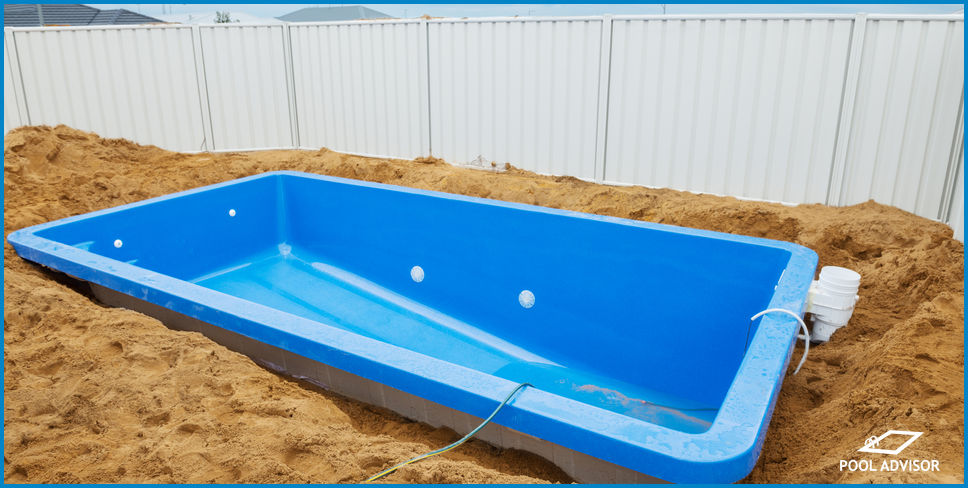
Can You Tile A Fibreglass Pool? What To Know
Fibreglass pools are often chosen for their longevity and durability. Although these types of pools can last several decades, some people can find the fibreglass lining a little plain. In these cases, you may be wondering: can you tile a fibreglass pool?
In this article we discuss whether or not you can tile a fibreglass pool, various ways of tiling, and different types of tile for you to consider.
Can You Tile A Fibreglass Pool?
Many pool owners assume that tiles cannot be added to fibreglass swimming pools because they are concerned that the tile grout may cause premature damage to the gel coating on your pool lining.
The good news is, tiles are not just the domain of concrete pools, they can be added to various areas of a fibreglass pool.
To install tiles in your fibreglass pool, you will need specific tools and the correct installation approach, as well as some determination. If you are not seeking a DIY approach to tiling your pool, professionals offer tiling services.
Ways To Tile A Fibreglass Pool
When deciding to tile your fibreglass pool, you should consider the different types of tiling that are available. Depending on the design and installation method you have in mind, you may need different materials. Here are some common ways to tile a fibreglass pool.
Waterline Tiling
Waterline tiling involves adding decorative tiles around the upper edge of the pool in the location where the waterline will fall once the pool is full of water.
In addition to adding beautiful accents to one of the most visible parts of your pool, tiles and silicone grout are remarkably easy to clean. For this reason, waterline tiling in fibreglass pools is very common. It is commonly known as coping tiling.
Ledge and Step Tiling
Ledge and step tiling involves adding accent tiles to the tops, sides, or edges of steps.
Done mostly for aesthetic purposes, some pool owners also choose to add high-contrast stripes to the edges of their pool steps in order to assist low-vision swimmers with finding the steps when entering and exiting the pool.
This can reduce the risk of swimmers tripping as they get in and out of the pool.
Mosaic Design Tiling
Mosaic design tiling typically involves adding larger images to broad surfaces in your pool.
Although more intricate designs can be and are often added to waterline and step tiling, mosaic design tiling refers mostly to large designs on the floor of the pool.
Some pool owners prefer images of aquatic life made out of tile, but you may prefer more ornate designs or something entirely different; the choice is up to you.
Full Pool Tiling
Full pool tiling in a fibreglass pool is somewhat more rare, but is still possible. Like the name suggests, in this process, the entire surface of your pool is covered in tiles.
While this can be very costly and labour intensive, many pool owners choose to have full tiling installed because they appreciate the luxurious appearance and feel of tiled pools.
Bear in mind that this option is more expensive. Consult our pool tile cost calculator for a rough price estimate.
Types Of Tile For Pools
In addition to the tiling types above, there are a wide variety of tile types. Speak to a professional pool tiler in Brisbane for advice on what is best for your pool.
Ceramic
Ceramic tiles are fabricated out of natural clays and sands that are then fired in a ceramic oven.
Easy to produce, ceramic tiles are potentially the cheapest option for tiling your fibreglass pool. Although ceramic tiles are not as sought-after as other tile types, they are still highly resilient and beautiful, despite being cheaper.
Porcelain
Porcelain tiles are the most expensive option with which you can tile your pool. Made out of purified clays and sands, porcelain tiles are made by firing these elements at a high temperature and then adding an appropriate colour glaze.
Porcelain tiles are preferable to ceramic tiles in many circumstances, despite being more expensive. This is because the production of porcelain tiles is more detailed, and the material produced has a lower porosity than ceramic tiles.
With lower porosity tiles, retiling will be less frequent.
Glass
Compared to porcelain and ceramic tiles which have different degrees of porosity, glass pool tiles are entirely occlusive, allowing no absorption of water. This can further increase the life of your tiling, but there are other things to consider with glass tiles.
Glass tiles are one of the easiest types of pool tiling to scratch or break. While many pool owners still enjoy glass tiles for their transparency and highly reflective, shiny appearance, this type of tiling may require more maintenance in terms of replacing broken tiles.

Louis
A chemical engineer by trade, Louis is committed to debunking myths in the pool industry by explaining the underlying chemistry and making it accessible to all.
